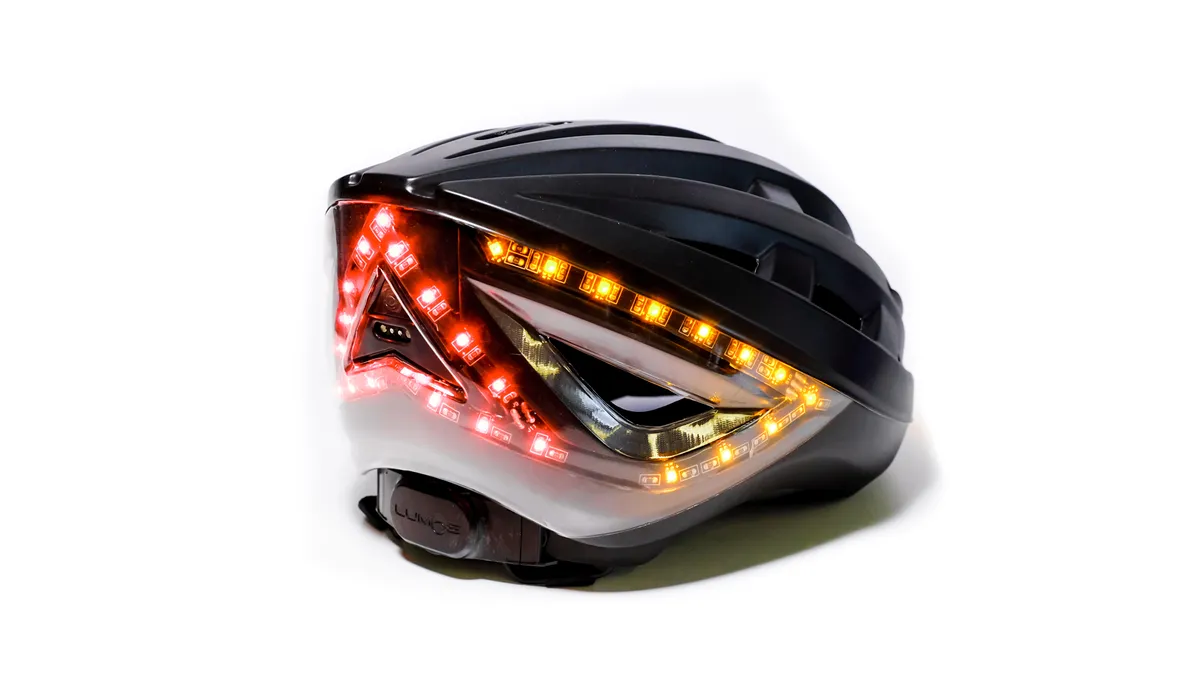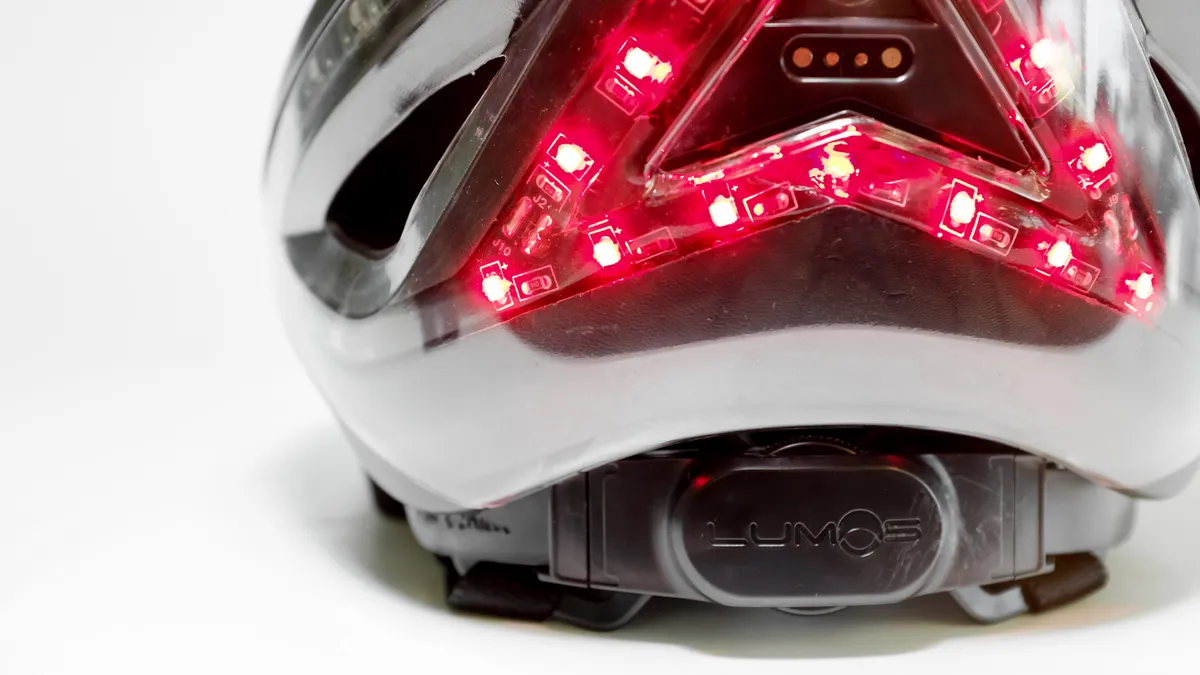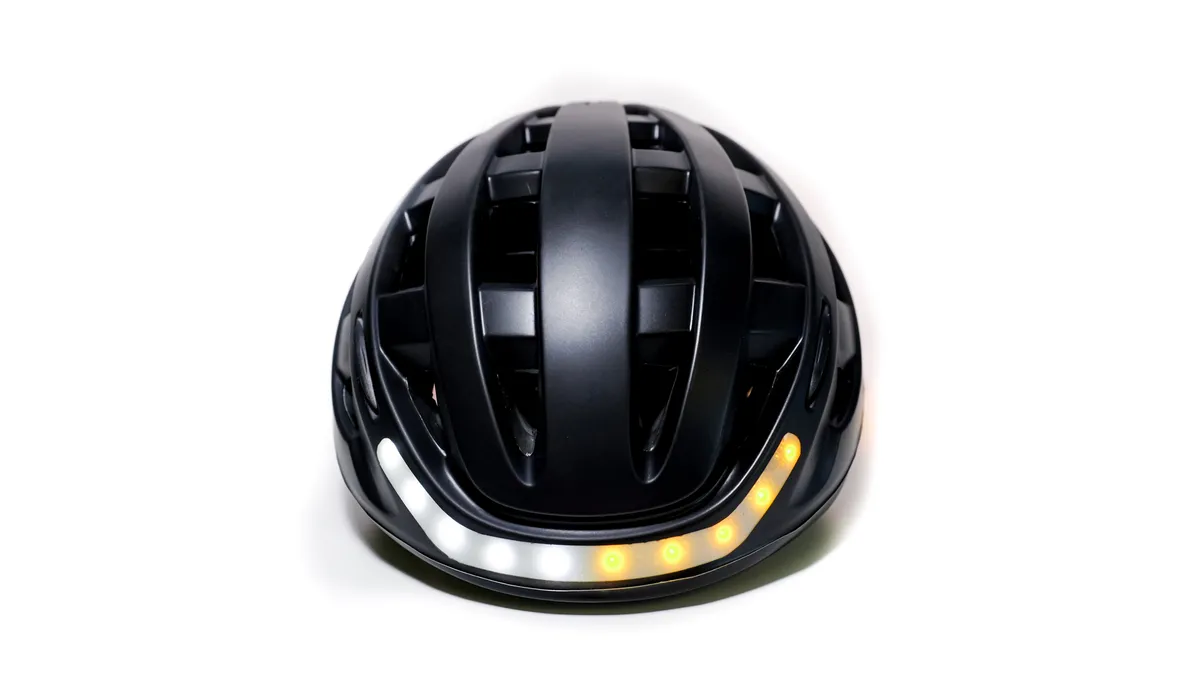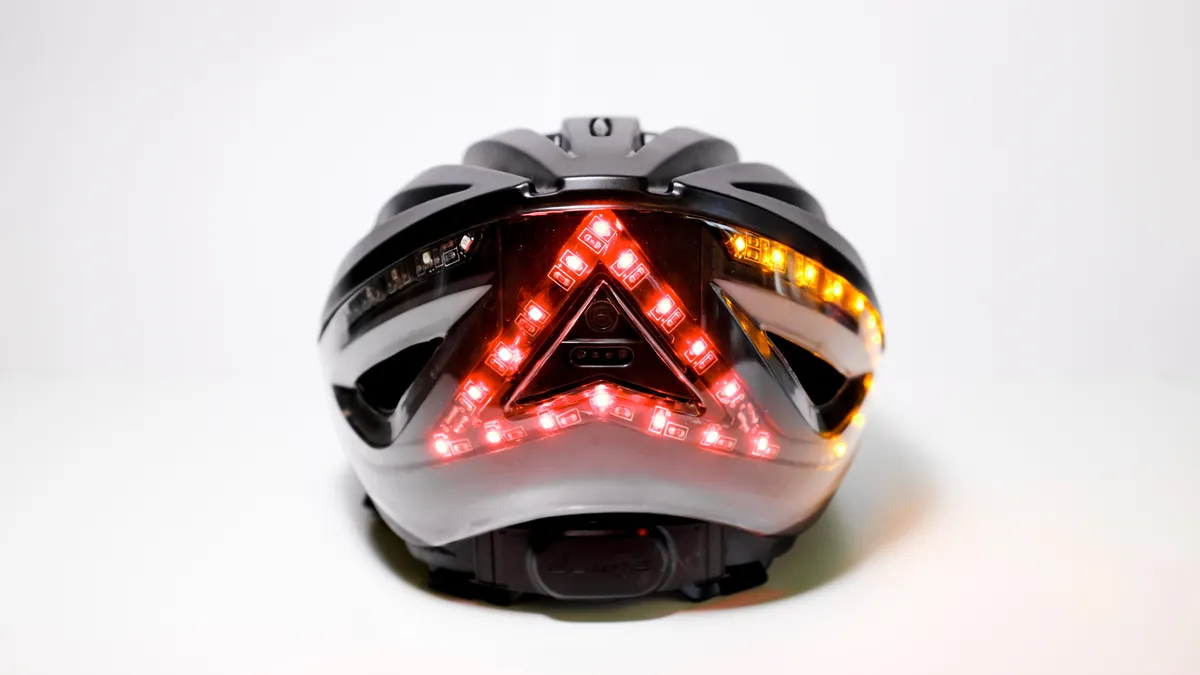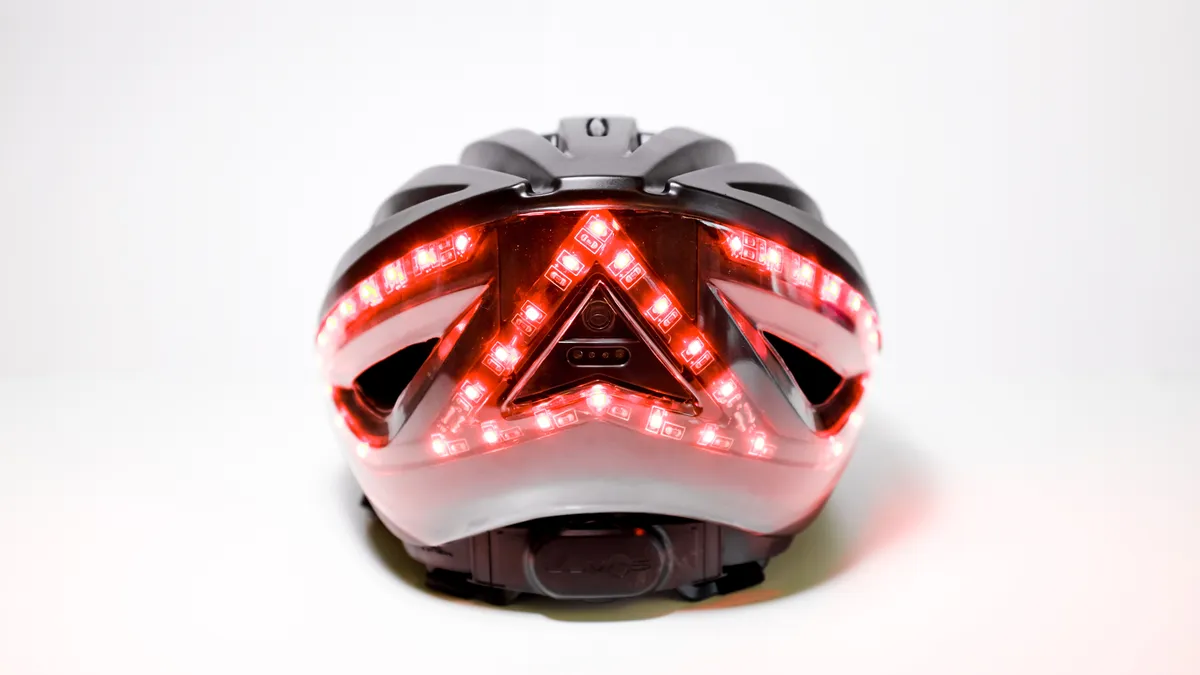A cycle helmet that combines front and rear lights with indicators and an automatic brake light is nearing production following a tremendously popular Kickstarter pledge.
Claimed to be the world’s first smart bicycle helmet, the Lumos has secured over 7,000 pre-order sales since it surfaced on Kickstarter back in August 2015.
The CPSC and EN certified shell of the 410g Lumos packs more than 60 LEDs, a three-axis accelerometer and a 1000mAH USB chargeable battery. Two arrow-shaped lights at the edges of the rear of the helmet function as indicators; these are controlled by a wireless remote at the handlebar.
Between those lights is a triangle of LEDs, which functions as both a high-level rear lamp or, thanks to the inputs from that accelerometer, when braking is detected all three rear lamps will illuminate simultaneously in a static red state to function as a brake light.
At the front are more LEDs, providing further visibility as well as forward facing indicators. It’s worth noting that none of the lights on this helmet are designed to replace your primary light source for night rides.

When the internal accelerometer senses deceleration the Lumos illuminates all three of its rear light clusters in the form of a brake light
The system has been designed with simplicity in mind, so charging is via USB, and the people behind Lumos are claiming a battery life of around 3hrs 30 mins per charge. Commuters needn’t worry about getting caught out in a shower either as the Lumos is water-resistant. The Lumos is available in one adult size, while a dial-based retention system means it should fit heads ranging from 54-62cm in circumference.
Those who were first to get behind the design late last year are expecting to have production helmets by the end of August. In the meantime, discounted helmets can still be preordered for £112/US$134 (retail price £138/US$165), those are expected to roll out from October.
